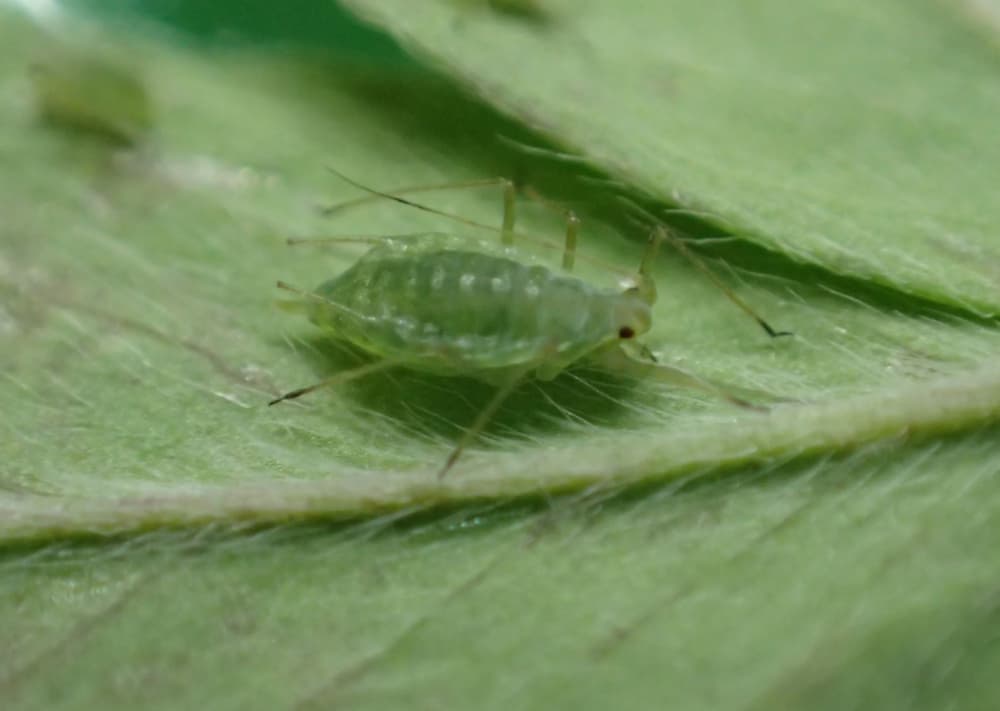Recent research led by Cesar Australia confirmed bluegreen aphid (Acyrthosiphon kondoi) resistance to many of the chemicals routinely used to control outbreaks in pasture seed crops. These findings are a first for this species.
Earlier this year – in response to growing industry concerns – AgriFutures Australia (AgriFutures), together with Lucerne Australia, invested in preliminary research to investigate potential resistance of bluegreen aphids to commonly used insecticides.
The project revealed that bluegreen aphid populations in key lucerne-growing regions of New South Wales (NSW) and South Australia (SA) were resistant to organophosphates, carbamates and pyrethroids, and recommended a number of important short-term management solutions to minimise crop damage. You can read the full report here.
A subsequent project has commenced building on this preliminary research. It seeks to contribute to the development of long-term pest management guidelines to mitigate the potentially devastating impact of bluegreen aphids, whilst carefully considering other lucerne pests and the broader insect community.
As part of this project, Cesar Australia’s research team is calling on pasture seed growers and agronomists to send in samples of bluegreen aphids for resistance screening.
Samples are being sought from SA where resistant populations are already problematic, as well as from NSW, Victoria (VIC) and Queensland (QLD) to determine the spread of resistant bluegreen aphids.
Project lead, Dr Evatt Chirgwin highlighted that key lucerne-growing regions – in the upper and mid-south-east of South Australia – are currently one of their prime targets for sample collections, even if growers have not yet experienced a chemical control failure.
“We are currently targeting samples from across South Australia and the Riverina area of New South Wales because we suspect resistant populations are floating around undetected in these areas”, said Evatt.
“Even if growers have not experienced control failure in these areas, there is a chance that a resistant population has recently spread to these areas, and we want to know about it”.
Growers and agronomists in other locations in NSW, as well as in VIC and QLD that have experienced control failure are also encouraged to send in samples. Evatt explained that these samples will help map the spread of resistant populations.
“In the preliminary stage of the research, we identified a small number of populations that had evolved insecticide resistance, which was the first case of resistance in this species.
“In this new phase of the research we want to understand where resistance has spread, to which crop type and if the resistance is stable or is increasing over time. A better understanding of these elements will help us to provide regional specific and more sustainable recommendations to growers.”, Evatt said.
Sending in a sample
To send in samples, growers need to use a non-crushable plastic container, a number of leaf samples, a piece of paper towel and an overnight express post bag.
“We’ve created a step-by-step guide which is available on Cesar’s website, but the main thing is collecting at least 50 aphids and any mummified aphids.
“Growers should start by placing a piece of paper towel in the bottom of a firm container. After they have located a population in their crop they should cut leaf samples from the plant directly into the container to ensure the aphids are not disturbed”, Evatt explained.
To guarantee samples are processed in a timely manner, growers are encouraged to send samples by overnight express post on Mondays through to Wednesdays, only. Growers should avoid sending samples towards the end of the week or over the weekend.
Samples can be addressed to:
Bluegreen aphid resistance testing service
Evatt Chirgwin
Cesar Australia
Level 1, 95 Albert St
Brunswick VIC 3056
Once samples have been posted, growers are asked to notify Cesar Australia via email at .
Growers can be reimbursed for the cost of postage by emailing their tax invoice to Cesar Australia.
To read more about sending in your bluegreen aphid samples, visit: https://cesaraustralia.com/resources/sending-aphids-for-resistance-testing/









